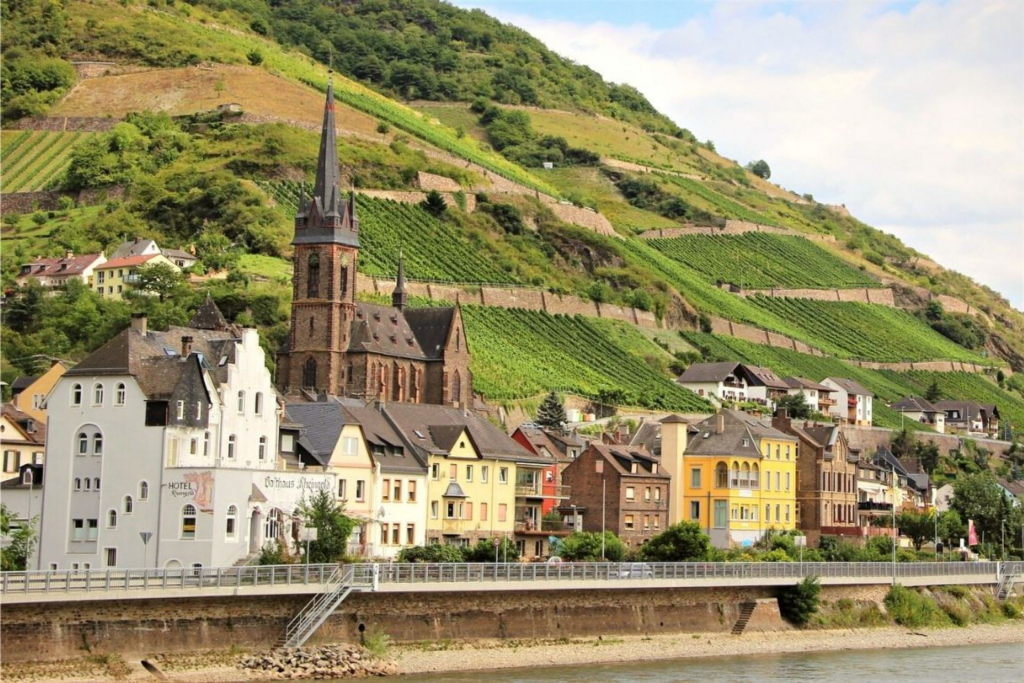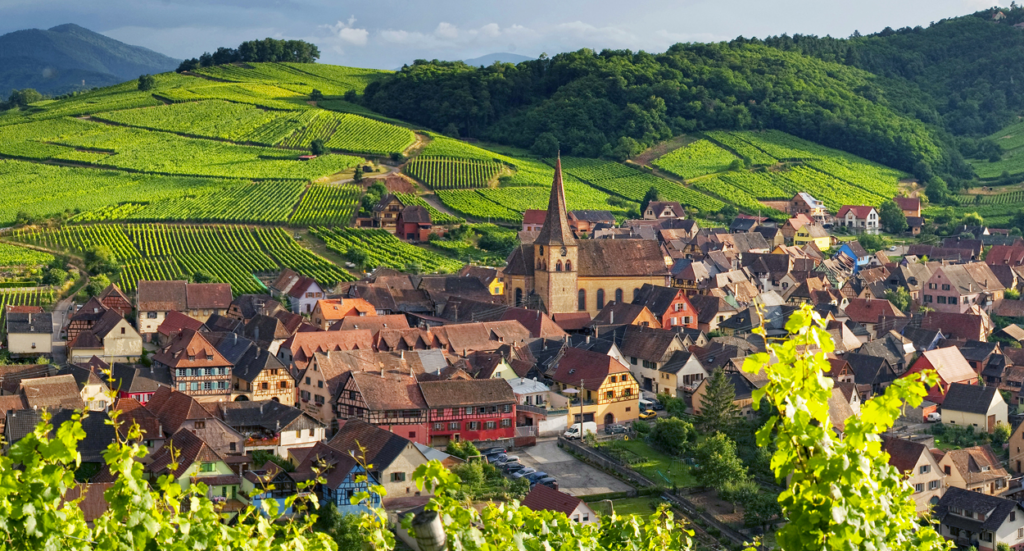The Grand Tour: France’s Magnificent Wine Regions
France stands as the cornerstone of the wine world—a country where centuries of tradition seamlessly blend with thoughtful innovation. For the discerning traveler with a passion for exceptional wines, France offers an unparalleled landscape of experiences that engage both the intellect and the senses. This guide will explore France’s premier wine regions so you can learn more and understand a sometimes complicated world of wine.
At Mistral Winds Travel, we love crafting bespoke journeys through France’s premier wine regions, connecting our clients with prestigious estates and hidden gems alike. This overview will introduce you to the distinctive character of each major French wine region, helping you identify which areas resonate most with your palate preferences and travel aspirations.
Understanding French Wine Classification
Before we embark on our tour of France’s wine regions, it’s worth noting the significance of the French appellation system. The Appellation d’Origine Contrôlée (AOC)—now harmonized with European law as Appellation d’Origine Protégée (AOP)—establishes strict regulations that preserve the authentic expression of each region’s wines.
This classification system isn’t merely bureaucratic; it’s a philosophy that protects the concept of terroir—that magical combination of soil, climate, topography, and human tradition that makes each wine unique. Understanding these designations enriches your tasting experiences and provides a framework for appreciating the nuanced differences between regions.
Learn more about French Wine Classifications here. Now let’s explore France’s wine regions!
Bordeaux: The Epitome of Prestige

Geographic Setting
Situated in southwestern France, Bordeaux’s vineyards are profoundly influenced by the Gironde estuary, which splits into the Garonne and Dordogne rivers. This maritime influence creates the perfect climate for producing some of the world’s most sought-after wines.
Key Areas
The Left Bank (Médoc, Graves) and Right Bank (Saint-Émilion, Pomerol) offer distinct expressions. The Médoc peninsula is home to four of the most prestigious communal appellations: Saint-Estèphe, Pauillac, Saint-Julien, and Margaux. Meanwhile, Saint-Émilion charms with its UNESCO-protected medieval town and exceptional vineyards.
Signature Wines
Left Bank châteaux typically produce Cabernet Sauvignon-dominant blends with remarkable aging potential—structured wines with notes of black currant, cedar, and graphite. Right Bank wines, led by Merlot, offer plush textures with plum, chocolate, and truffle characteristics.
Cultural Highlights
Beyond wine, Bordeaux offers La Cité du Vin (an immersive wine museum), exceptional dining, and easy access to Arcachon Bay for the freshest oysters you’ll ever taste.
Burgundy: Where Vineyard Parcels Reign Supreme

Geographic Setting
Burgundy’s heart lies in the Côte d’Or (“Golden Slope”), a limestone escarpment with perfectly east-facing vineyards that capture the morning sun. This precise orientation, combined with millennia of vineyard selection, has created the world’s most detailed vineyard hierarchy.
Key Areas
The Côte de Nuits produces the world’s most profound Pinot Noir, while the Côte de Beaune is renowned for both red and white wines. Further north, Chablis creates electric Chardonnays, while the Mâconnais to the south offers exceptional value.
Signature Wines
Unlike Bordeaux’s blends, Burgundy focuses on single-variety expressions: ethereal Pinot Noir with notes of red berries, forest floor, and spice; and Chardonnay ranging from the steely, mineral-driven wines of Chablis to the rich, honeyed examples from the Côte de Beaune.
Cultural Highlights
The Hospices de Beaune hosts the world’s most famous charity wine auction each November. The region’s gastronomy focuses on terroir, from beef bourguignon to coq au vin, while the historic city of Dijon offers architectural and cultural riches.
Champagne: The Art of Celebration

Geographic Setting
France’s northernmost fine wine region benefits from cool temperatures that maintain crisp acidity—essential for sparkling wine. The region’s defining characteristic is its chalk subsoil, which provides excellent drainage and imparts a distinctive minerality.
Key Areas
The Montagne de Reims is known for powerful Pinot Noir, while the Côte des Blancs produces the finest Chardonnay. The Vallée de la Marne specializes in Pinot Meunier, and the Aube is emerging as a source of characterful wines from smaller producers.
Signature Wines
Traditional method sparkling wines produced primarily from Chardonnay, Pinot Noir, and Pinot Meunier. Styles range from the precision of Blanc de Blancs (100% Chardonnay) to the richness of Blanc de Noirs (from black grapes) and the complexity of prestige cuvées.
Cultural Highlights
The magnificent Gothic cathedral in Reims has witnessed the coronation of French kings for centuries. The Avenue de Champagne in Épernay houses the headquarters of many prestigious Champagne houses, and the region’s proximity to Paris makes it perfect for a luxurious side trip.
Rhône Valley: A River of Distinction

Geographic Setting
Following the Rhône River for over 200 kilometers from Vienne to Avignon, this region divides neatly into two distinct sections: the cooler, granite-dominated Northern Rhône and the warmer, Mediterranean-influenced Southern Rhône.
Key Areas
The Northern Rhône features dramatically steep vineyards in appellations like Côte-Rôtie, Hermitage, and Condrieu. The Southern Rhône centers around Châteauneuf-du-Pape, with its iconic stone-covered vineyards, along with Gigondas and Vacqueyras.
Signature Wines
Northern Rhône reds showcase intense Syrah, often co-fermented with a touch of Viognier, producing wines with notes of black pepper, olive, and violet. The Southern Rhône crafts generous Grenache-based blends, complemented by up to 12 other varieties, offering rich, herb-infused flavors.
Cultural Highlights
The remarkably preserved Roman theater in Vienne hosts summer concerts, while the imposing Papal Palace in Avignon stands as a testament to the time when the papacy relocated from Rome. The lavender fields of Provence lie just beyond the southern vineyards.
Loire Valley: Elegance Along the River

Geographic Setting
Following France’s longest river from its Atlantic mouth to the center of the country, Loire Valley vineyards benefit from diverse microclimates. The maritime influence gradually gives way to continental conditions as you move inland.
Key Areas
Moving from west to east: Muscadet near the Atlantic; Anjou-Saumur with its diverse styles; Touraine, home to Vouvray and Chinon; and the Central Vineyards, including Sancerre and Pouilly-Fumé.
Signature Wines
The Loire excels in crisp, mineral white wines from Sauvignon Blanc (Sancerre, Pouilly-Fumé) and Chenin Blanc (Vouvray, Savennières), along with elegant reds from Cabernet Franc (Chinon, Bourgueil). The region also produces some of France’s finest sparkling wines outside of Champagne.
Cultural Highlights
The Loire Valley is known as “the garden of France,” with Renaissance châteaux dotting the landscape. The region’s troglodyte caves—carved into the soft limestone—serve as cellars, restaurants, and even hotels.
Alsace: Germanic Influence with French Finesse

Geographic Setting
Protected by the Vosges Mountains, which block rainfall from the west, Alsace enjoys a surprisingly sunny, dry climate. This easternmost French wine region shares much with neighboring Germany but expresses its wines with distinctive French flair.
Key Areas
The Route des Vins d’Alsace stretches for 170 kilometers, connecting picturesque villages with flower-bedecked, half-timbered houses. The 51 Grand Cru vineyards are positioned on the most favorable slopes.
Signature Wines
Unlike most French regions, Alsace labels its wines by grape variety. Riesling shows remarkable precision and aging potential; Gewurztraminer offers exotic lychee and rose petal aromas; Pinot Gris presents rich texture with smoke and honey notes; while Pinot Noir is increasingly impressive as the climate warms.
Cultural Highlights
Strasbourg’s old town, centered around its soaring cathedral, showcases the region’s unique cultural fusion. The region’s Christmas markets are among Europe’s most enchanting, and the distinctive Alsatian cuisine reflects both French and German influences.
Planning Your French Wine Journey
Hopefully you’ve enjoyed being able to explore France’s wine regions. These diverse wine regions offer endless possibilities for exploration. Whether you’re drawn to the grandeur of Bordeaux’s châteaux, the nuanced terroir expressions of Burgundy, the celebratory sparkle of Champagne, the dramatic contrasts of the Rhône, the elegant diversity of the Loire, or the aromatic precision of Alsace, we can craft an experience that perfectly aligns with your interests.
Our bespoke itineraries connect you with premier estates, hidden gems, and exceptional dining experiences, all while providing the cultural and historical context that makes these regions so fascinating. We handle every detail, from exclusive tastings at normally-closed estates to reservations at the finest restaurants.
Now that you’ve been about to explore France’s wine regions, you now can begin learning more! In the coming months, we’ll be sharing detailed guides to each of these magnificent regions, delving deeper into the specific appellations, producers, and experiences that make each area unique.
We invite you to contact us for a personalized consultation to discuss how we can create your ideal French wine journey—one that will deepen your appreciation for these storied regions and their exceptional wines.
Contact Mistral Winds Travel today to begin planning your ultimate French wine adventure.
My clients receive comprehensive destination guides, but I believe great travel inspiration should be shared with everyone. Here you'll find insider tips from my travels, wine region discoveries, and destination highlights that might just inspire your next adventure. Whether you're planning a honeymoon, anniversary trip, or culinary escape, let's explore the world together!
Welcome To My
Home On The Web
A cool, dry wind that flows through France's Rhone Valley towards the Mediterranean Sea. It naturally ventilates vineyards, creating the perfect conditions for exceptional French wines and regional gastronomy.
What is a Mistral Wind?